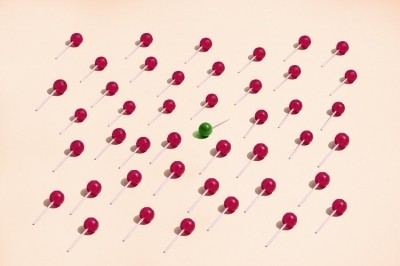How AI can help design proteins for the food industry

The myriad barriers and opportunities around the application of proteins in a range of novel foods is on everyone’s lips in food tech.
Finding the right proteins in nature is difficult, which is why a range of technology companies are dedicated to creating and optimising ‘designer proteins’.
French start-up AI Bobby, for example, uses AI to improve protein functionality in plant-based meat. Israeli manufacturer Amai Proteins designs and produces sweet proteins as an alternative to artificial sweeteners.
Zürich-based start-up Cradle is another. Using generative AI to help scientists design proteins for a variety of applications, from cultivated meat to enzymes for food safety, Cradle aims to do things with proteins that may never have been possible in nature.
“Nature is really creative. There are billions of proteins that we can study and we don't know the function of so many of them. And of course this shows up in our drugs and in our foods. So there is a huge amount that we can take as starting point from nature. But very often what we're trying to do as humans is something that nature hasn't quite come up with,” Elise de Reus, co-founder at Cradle, told FoodNavigator.
Proteins from nature are often starting points, she told us, but with Cradle’s technology, they can be enhanced for new functions.
Designing proteins
Cradle designs proteins in order to fulfil specific tasks needed by its clients. To do this, proteins need to have specific properties.
“Now, proteins show up in all parts of living systems, in the food that we eat, in whey shakes and in eggs [for example], but they also make up a lot of the active components of cells. So they catalyse reactions, helping chemicals to transform for one state into another. They give structure and we can use them in all sorts of processes,” Reus told us.
“Sometimes you can find these proteins in nature, and sometimes you can use technologies in the lab” to develop them.
How does AI make the process more efficient?
Useful proteins can be found in nature, Reus says. For example, some enzymes can make bread last longer, which in turn prevents bread waste.
However, in some occasions one may want to develop a new property in the protein, such as make it last longer at room temperature. For this, you would need a modification.
Developing such a protein could take years of R&D, Reus told says. Generative AI, which Cradle uses, can make the process quicker.
The models that Cradle uses, like chat bots such as ChatGPT, use machine learning. Unlike ChatGPT, however, they are trained not on the language of humans, but the protein language.
They can look at different protein sequences and how they behave in a lab, and from this make suggestions about how they can perform even better.
How these proteins can be used in the food industry
Proteins have a wide range of uses in the food industry beyond simple nutrition. For example, as well as preservatives, Reus told us, enzymes can make fruit juices clear instead of opaque.
Enzymes can be used to develop flavours in products. For example, nudkatone is a compound derived from grapefruit that creates its flavour but, according to Reus, one would need 400,000 kilograms of grapefruit for one kilogram of purified nudkatone. Instead, one can simply use an enzyme to make the molecule directly.
Enzymes can also be used to dispel off-taste in plant-based products. These can be found in nature or adjusted so that off-flavours are removed.

Cradle can also help to design growth factors for cultivated meat. Growth factors need certain proteins to provide signals that otherwise a body would give. While these proteins are found in nature, they are often unstable and degrade easily. Machine learning can help improve this stability, increasing the likelihood that cultivated meat can be upscaled.
Creating proteins
Proteins can be created at the DNA level. “The starting point is that you have the DNA sequence itself and then you help you add that DNA sequence to the cell which has all the different tools to turn that DNA into the protein,” Reus told us.
“Then that protein can sit with it as a little machine inside that cell factory to catalyse a reaction.”
These proteins can sometimes be functional, such as the previously mentioned removal of off-tastes or clearing of fruit juice, or they can be the product itself. For example, whey protein is used as a product rather than simply a function.
Proteins are tested out on a tiny scale in the lab to ensure that they work. For example, Reus told us, bread-baking enzymes might be tested out in 1mm loaves.





















